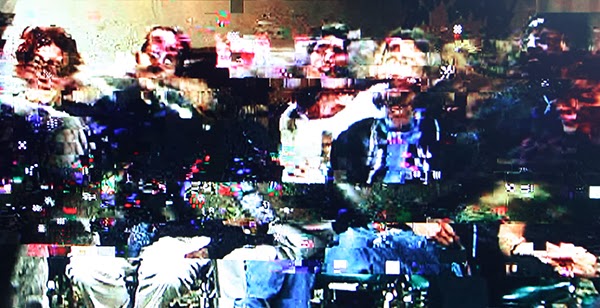Glitch is the new distortion
In music, algorithms have a tendency to produce clunky results, that like distorted guitar effects, are easy to use out-of-the box, but have to be used tastefully. Use of distortion is as much the result of accident as it is the pushing of the natural limits of a system. The guitarist that played on Ike Turner's Rocket 88 (1951) apparently dropped his amplifier and ripped the speaker cone, resulting in a distorted sound that he liked. Years later the guitarist Link Wray intentionally damaged a speaker cone with a pencil to get the same sound. Now digital artists are doing something similar with processes such as 486 Shorts and GlitchSort by creating a situation where accidents happen by design, similar to Wray's poking a pencil into a speaker cone.
The ear is also flexible and adaptable: the more one listens to dissonant music, the more one can tolerate it and even begin to have an affinity for it. Just as we have become used to distortion, we are settling in with a more moshed appearance in some digital art.
Natural compression artefact (photograph of a TV screen on a frozen frame):
Glitch with treatments and transformations, as controlled distortion:




Comments